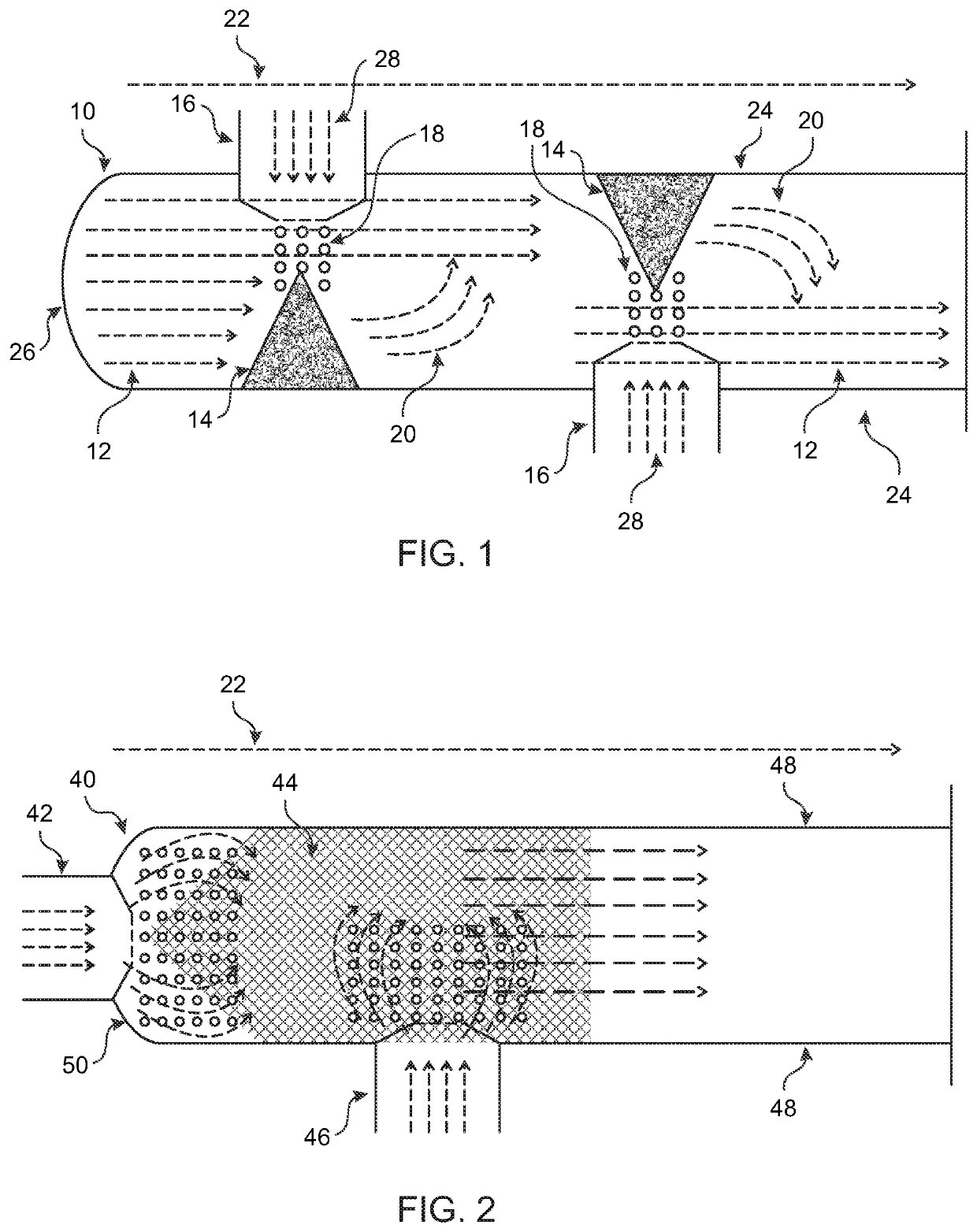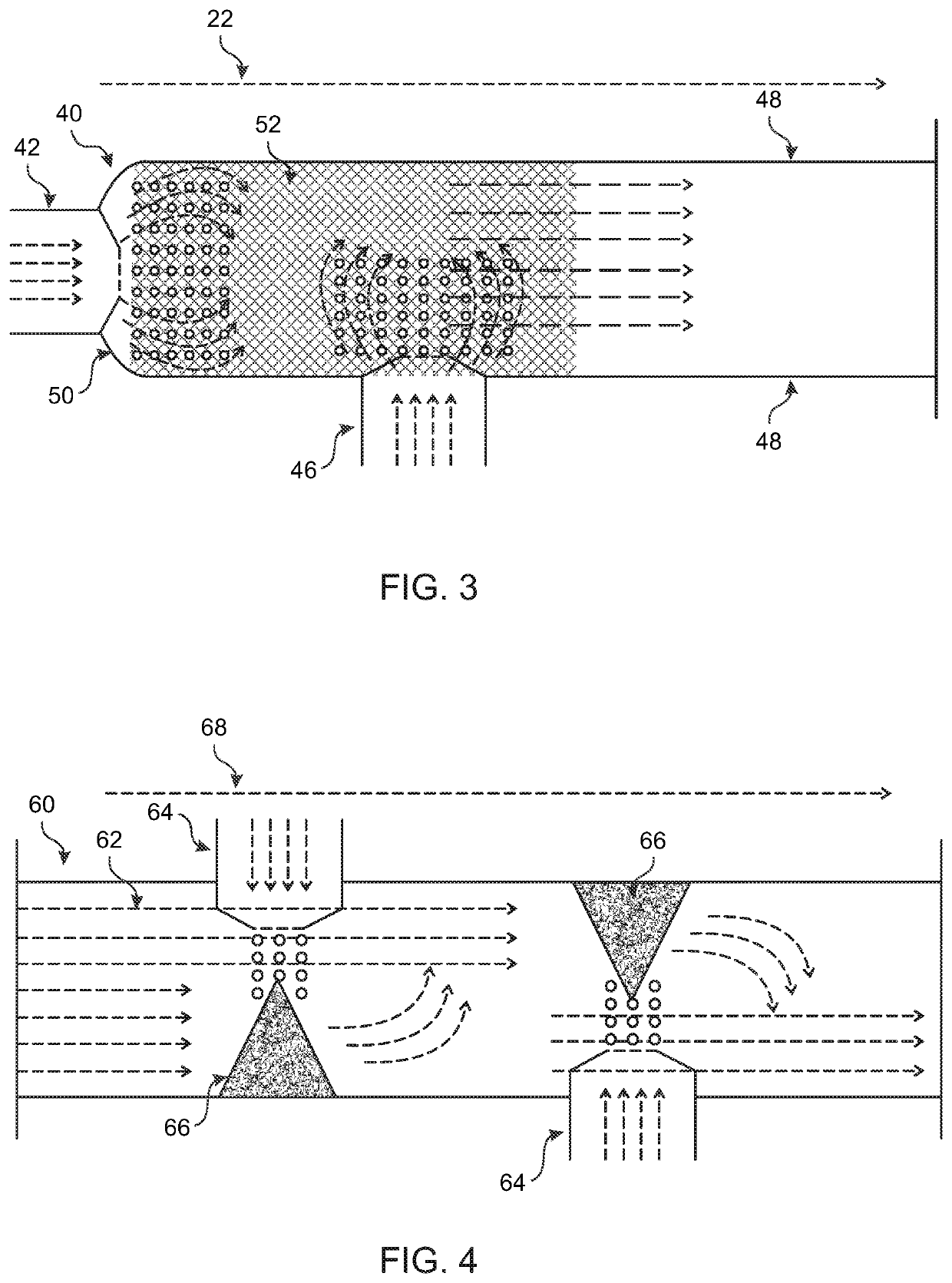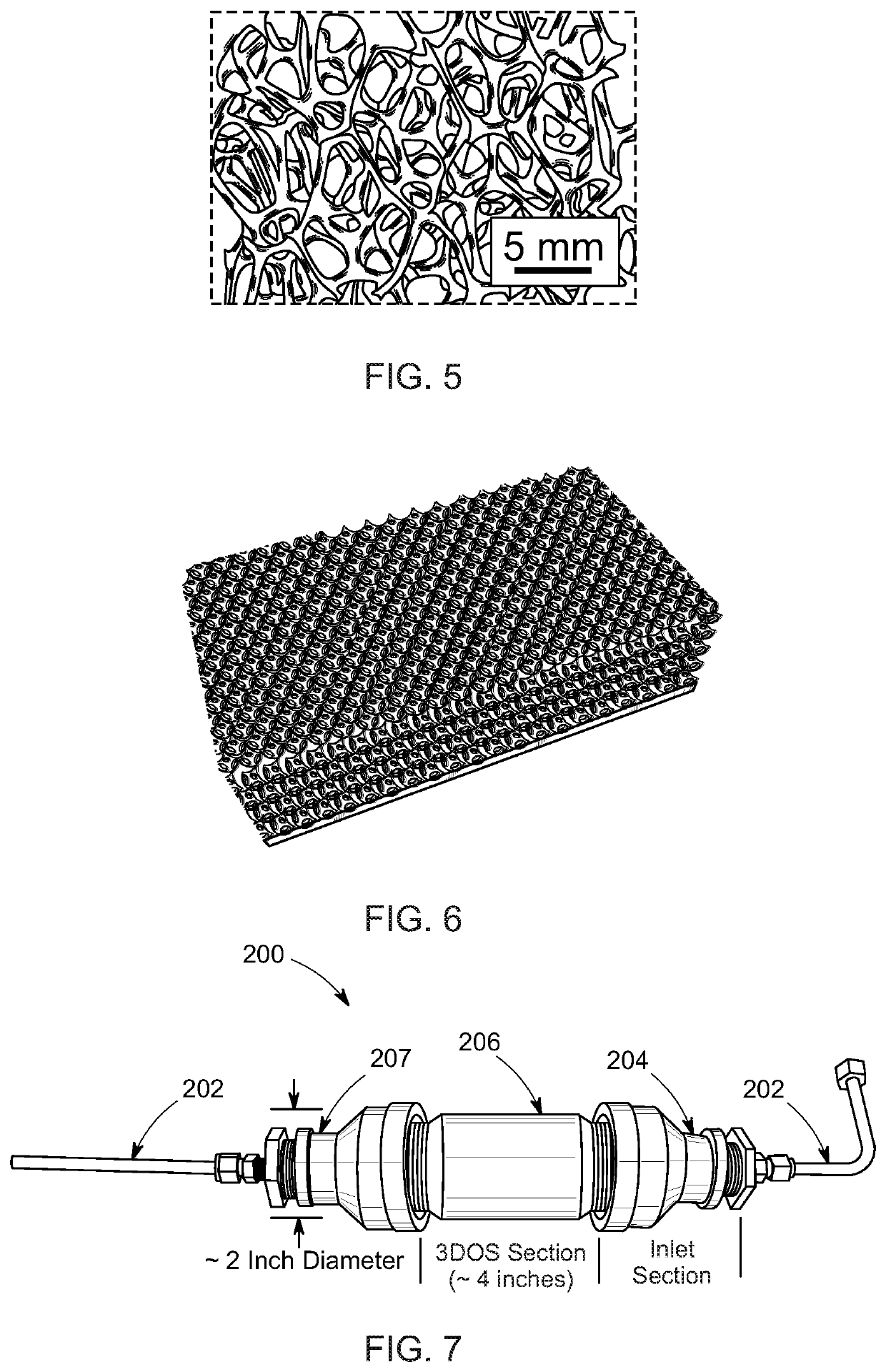Fluid decontamination apparatus
a technology of decontamination apparatus and flue, which is applied in the direction of water treatment temperature conditions, separation processes, and filtration treatment, etc., can solve the problems of further and destruction of unwanted and toxic chemicals
- Summary
- Abstract
- Description
- Claims
- Application Information
AI Technical Summary
Benefits of technology
Problems solved by technology
Method used
Image
Examples
Embodiment Construction
[0039]Referring now to the drawings, and particularly FIG. 1, there is shown a fluid decontamination apparatus having a body 10 with a plurality of three-dimensional open structure (3DOS) substrates 14 spaced about therein, wherein a contaminated fluid flowing 12 through the body 10 will contact the 3DOS substrates 14. Nozzles 16 can be inserted and secured within inlet apertures disposed about the body 10 and configured to inject 28 the contaminated fluid with / without air to induce the occurrence of hydrodynamic cavitation 18. The substrates 14 can be porous and permeable, enabling the contaminated fluid to flow 12 therethrough, wherein the fluid flow passageway through the pores extends the volume of contaminated fluid exposed to turbulent and cavitation inducing flow conditions. Moreover, the 3DOS substrates 14 may be coated with one or more types of catalysts, wherein the interaction between the contaminated fluid and the porous surfaces can initiate chemical reactions. As such,...
PUM
| Property | Measurement | Unit |
|---|---|---|
| pressures | aaaaa | aaaaa |
| temperature | aaaaa | aaaaa |
| pressure | aaaaa | aaaaa |
Abstract
Description
Claims
Application Information
 Login to View More
Login to View More - R&D
- Intellectual Property
- Life Sciences
- Materials
- Tech Scout
- Unparalleled Data Quality
- Higher Quality Content
- 60% Fewer Hallucinations
Browse by: Latest US Patents, China's latest patents, Technical Efficacy Thesaurus, Application Domain, Technology Topic, Popular Technical Reports.
© 2025 PatSnap. All rights reserved.Legal|Privacy policy|Modern Slavery Act Transparency Statement|Sitemap|About US| Contact US: help@patsnap.com



